Never A Taxi: 1975 Checker Marathon
Anyone who’s ever ridden in the back of a Checker cab probably remembers how much legroom there was. Most of the Marathon workhorses that were built over a 22-year period went toward fleet use, most notably taxi services. By today’s standards, they were virtual tanks and were powered by proven mainstream powerplants from the likes of Chevrolet. Marathons didn’t often find their way into the hands of John Q. Public as Checker had no dealer network, but the seller’s 1975 edition certainly did. This one is being sold out of an estate and looks to be in good condition with just 43,000 miles. It’s in a garage in Hockesson, Delaware and available here on eBay where the bidding has reached $5,100.
Checker Motors was based out of Kalamazoo, Michigan and built the Marathon from 1961-82. While most of them were produced as rather pedestrian sedans, there were also some station wagons and a somewhat rare “Aerobus” that had seating for 12. It was hard to tell one model year from another as changes were seldom were made and usually mechanical. The most noticeable were the cowcatcher bumpers that came along in 1974-75 that were as bulky as they looked. Apart from their deployment in the hack world, Marathons were also bought by police departments and others having fleet requirements.
While total Marathon’s exact production can’t be determined, we understand they averaged about 4,200 cars in each of their last 10 years. After the last Marathon was manufactured in 1982, Checker no longer built any automobiles, instead making body stampings for GM, Ford, and Chrysler until filing for bankruptcy in 2009 as a result of the downturn in the U.S. auto industry.
We’re told the seller’s Checker Marathon never saw taxi service and was used as a personal vehicle. Its mileage is low for its age and the car looks to be in good shape overall. There are a few blemishes in the paint, but the sheet metal looks solid, especially those ginormous bumpers. The red interior looks to have held up well, though its rather plain as most Checkers would be. The rear seating area looks roomy enough for Bigfoot to stretch out in comfort.
As was the case with many Marathons, this one has a 250 cubic inch Chevrolet inline-6 under the hood, which is said to run good as does the car overall. Those engines were only rated at 100 hp in the days of detuning, so this Checker would not be quick off the line. It has an automatic transmission and – since the Powerglide was retired in 1973 – this one is likely Chevy’s smallest version of the Turbo-Hydramatic. Unless you’ve got some yellow paint on hand and want to rebuild the taxi industry, this car would be an attention getter at Cars & Coffee. Not because its so unusual, but because it’s so ordinary!
Auctions Ending Soon
 1971 Ford Mustang Mach 1Bid Now12 hours$7,100
1971 Ford Mustang Mach 1Bid Now12 hours$7,100
 2003 Porsche Boxster SBid Now13 hours$6,250
2003 Porsche Boxster SBid Now13 hours$6,250
 1966 Lincoln ContinentalBid Now15 hours$500
1966 Lincoln ContinentalBid Now15 hours$500
 2000 Jaguar XJ8LBid Now4 days$1,250
2000 Jaguar XJ8LBid Now4 days$1,250
 1977 Datsun 280ZBid Now5 days$275
1977 Datsun 280ZBid Now5 days$275
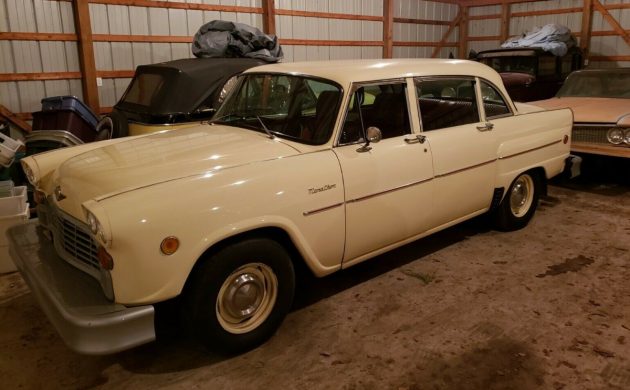
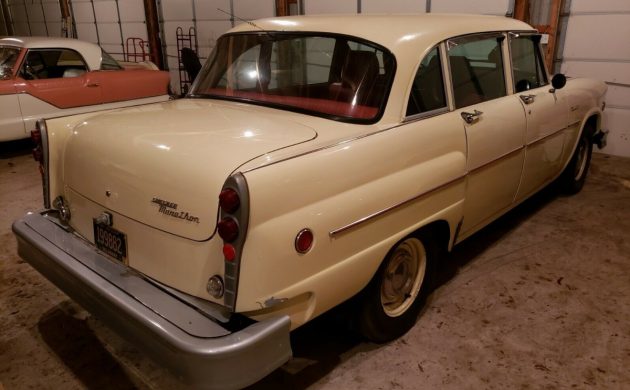
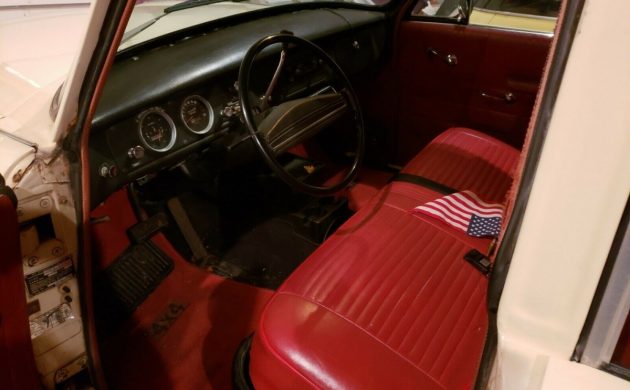
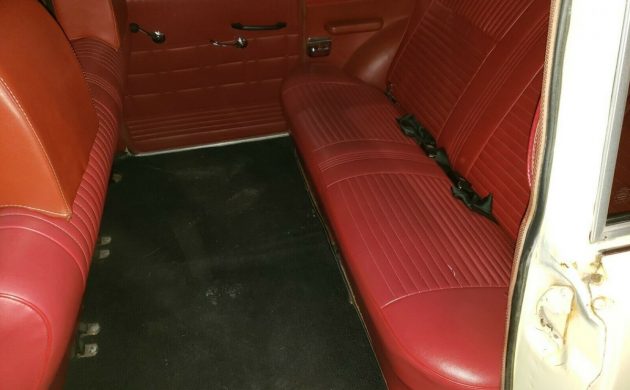
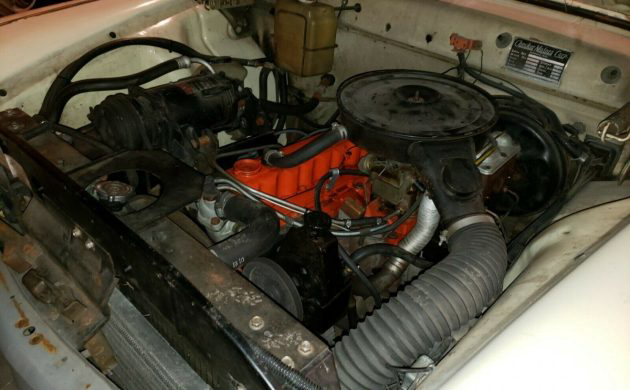

Comments
What would be the ideal daily driver for dense, gridlock type commuting?
This.
A real car. Simple, rugged and easy to repair.
With the least amount of mechanical skill, likely the last car you’d ever need.
Fuel mileage…baaah..who cares?
Studebaker Lark “Cruisers” were also built on a longer WB chassis for some years and often used for taxi service. They also had an admirable amount of rear leg room for a “compact.”
“Built like a tank” but beat to sheet as taxis, which is why there are very few left!
What is your least you would take for the Checker? I like the Checkers let me know! It need to transport it to S.C. The AD said it is in running condition, any issues? Thanks, Tom
You need to go on eBay to find answers to your questions. You won’t get any on Barnfinds!
https://www.ebay.com/itm/164620307598
Hey Red, if you buy it let me know. I deliver cars for people all the time.
My room mate in college had one. It was a former NYC cab. It was in decent shape and ran great. There is a privately owned Checker just up the road from me. It never was a cab. Low miles with a silver exterior and a fancy burgundy velour interior. I can’t remember what it has for an engine. I would own either one.
I bought a 71 wagon that was traded at a Dodge store with 32k miles at a dealer auction in 89 , it had a 350 Chevy with a Turbo 400 trans and A/C . I paid $550+ fees and sold it in Hemmings for $2500 . It was a great car I wish I still had . It was built like a military vehicle .
The ideal kids first car! Sure, they’ll say they were scarred for life, and, tell their therapist they blame you for every disappointment in their life because of it, but, if they’re true gearheads, that thing will get a V-8 (turbocharged?) for the ULTIMATE sleeper, and live on forever!
Calling Jim Ignatowski. Your car is ready.
“What does a yellow light mean?”
“Slow down.”
Whhhaaatt…..Dooooesss… aaaaa..yyyyyyeeellloowwww…..llliightttt….mmeeeeeannnn?”
Cemented my love of Christopher Lloyd. (I already loved Checkers)
One of the funniest scenes ever!
I ran an antique restoration shop that also did repairs to older vehicles. About 1980 a man brought his Checker station wagon in for brake work, and soon after that I started getting calls from other Checker owners all over the Washington, DC and Baltimore areas because they were looking for a shop willing to work on Checkers.
Most of the independent shops in the area were afraid to work on Checkers. They didn’t realize just how easy they were to repair, and getting parts was as simple as making a phone call to Kalamazoo or my NAPA parts store! We used to do a lot of Checker car repairs, and one of my customers even brought me a “Checker Cars Serviced Here” sign! And I should mention that not one of my Checker customers drove their car as a taxi.
Bill, I always await your comments…I LOVE ‘EM!
I worked on Farmall tractors that were more complicated than that wagon I had . If this was a V8 car I would be bidding . They were a great car that were ugly in a great way and just tough as nails .
Checker Marathons were never cabs. The yellow and Checkered up Marathons used as picture cars were never cabs. Almost no Checker cabs survived. I believe only 2 NYC Checker cabs are verified survivors . I believe there is only a couple of single headlight A8 models left. The Quad headlight cabs were A9, the non taxi version was the Supurba. From 1963 the cabs were called A11 and the private car became the Marathon.
Mitch Ross,
Thanks for reminding me about the NYC cab survival situation. I did a lot of research in the 1970s concerning the fairly rare Packard taxicab, made from 1941 to 1949. [I had an experimental 1948 Packard Taxicab, hence the interest.]
In talking with Mr Bob King Jr, who with his father, owned and operated Packard Federal, the commercial and export division of Packard Motor Car Company [PMCC], I learned that New York [not sure if it was state wide or only NYC] forbid the sale of a licensed Taxicab without it’s medallion [a license disk that allowed the vehicle to be run as a Taxi].
And upon the physical transfer of a medallion to another vehicle, the older taxicab had to be scrapped or used for spare parts, never sold to the public. All medallions have always been secured to the front hood of the taxi, by drilling a hole in the sheet metal, and riveting the medallion in place. This was accomplished by the Taxicab and Limousine Commission.
A side note about medallions: As of 2014 and before the rise of companies like Uber and Lyft, a real Taxicab medallion had a retail value in excess of $1,300,000.0,0 as it is a permanent license that never expires, and they don’t make new ones available. This high cost is a major reason NYC taxicabs typically run 24/7/365.
I’ve not kept up with the latest in medallion value, but I’ve heard the city is being sued by medallion owners over a failure to regulate Uber & Lyft operators, who don’t have medallions. The city is trying to max the value of the medallion at $250,000, but that’s not sitting well with owners. To read more, look here:
https://nypost.com/2020/05/11/nyc-taxi-rescue-plan-calls-for-medallions-to-be-250000/
Here’s what a NYC medallion looks like:
https://nypost.com/wp-content/uploads/sites/2/2017/09/taxi-medallions-uber.jpg?quality=90&strip=all&w=1200
See look up Checker heads on Facebook I’ll give you the exact figure out how many Checker survived Some cab companies used marathons because that’s all they can get a hold of.
I knew a fellow that worked for a finance company that used to finance
the sale of the medallions. It was a great business until Uber type operations
took over. I believe they stopped financing anymore at the big numbers that
the medallions were selling for.
Uber has all but destroyed the taxi and limo business.
Steve,
The slow death of the limo business in north America began towards the end of 1990. In the 3 years leading up to that point, the insurance industry had doubled their liability rates each year, to the point only a few major players who were self-insuring could survive.
In 1988, the various Yellow Pages throughout the Washington DC area, each had over 30 pages of limousine rental company listings. By the 1991 edition, that had been reduced to less than 2 pages.
The principle causes were several; In addition to the high insurance costs, it was the end of the “Me” years, and the beginnings of more economical transportation means could be seen. Plus many companies were no longer allowing opulent big limos, telling employees to use what became known as “Black cars”, mostly full size Lincoln or Mercury sedans with drivers.
Yes, for many jurisdictions, Uber and Lyft have decimated the regulated Taxi and limo locations, because they circumvented the regulations and high operating costs, most of which were caused by the local and state governments that failed to act quickly to protect the T & L industry.
I find it interesting that numerous local and state governments have seen a huge decrease in tax revenue from the T & L, because they failed to regulate the new “on demand” internet ordered services.
I wrote about the beginning of the end, in an article for the National Limousine Association back about 1991 or’ 92, and it was well received.
In doing more research today, I have noticed there are several major lawsuits against NYC for failure to regulate the new competition from Uber, Lyft, and others, causing the value of the Taxi medallions to lose upwards of 90% of their value. These suits could prove very costly for the city if they are upheld.
“You talkin’ to me”? The movie Taxi Driver put these on the map. It was such a powerful movie and the car was a big part of it. All that’s missing here is the bar code on the roof. Checkers were about the most generic car you could buy. With it’s years as a taxi, and probably billions of miles driven, I don’t think a tougher car was made. There was no need to change it, a true sign of success. People rip on me for designating an iconic car, but a Checker doesn’t get anymore iconic. Great find, I’d have to think parts will never be a problem.
As a civilian Checker, I was expecting to see a 350 under the hood.
As usual, leave it to Bill McCoskey to weigh in with a wealth of information (and I mean that in the best possible way!).
Thanks, Bill!
Steve Clinton,
Thank you. It’s always been my desire to share a wealth of information, ‘for that is the way we all learn. It’s information, guided by truth, that always wins. This is no more exemplified, than what has happened in America today.